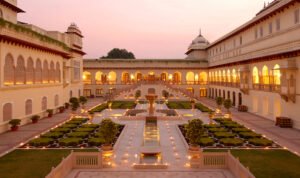Long before the Indian National Congress was born, before slogans echoed through the streets, and decades before freedom was won — India witnessed its first large-scale uprising against British rule: The Revolt of 1857. Also called the First War of Independence, this event marked a turning point in India’s history. Though it did not succeed in overthrowing the British, it planted the seeds of resistance that would grow into a full-blown independence movement.
What Sparked the Revolt?
By 1857, discontent had been building among various sections of Indian society due to:
Harsh British policies: Heavy taxation, land seizures, and the destruction of traditional industries left farmers and artisans in deep distress.
Disrespect for Indian culture and religion: The British often ignored religious sensitivities. The final straw came when the new Enfield rifle cartridges were rumored to be greased with cow and pig fat, offending both Hindu and Muslim soldiers (sepoys).
Political annexations: Under the Doctrine of Lapse, several Indian kingdoms were taken over by the British, including Jhansi, Awadh, and Satara — angering rulers and their people.
Discontent in the army: Indian sepoys, who formed the backbone of the British East India Company’s army, were underpaid, mistreated, and discriminated against.
These tensions exploded in Meerut on May 10, 1857, when Indian soldiers revolted, killing their British officers. This sparked a chain reaction across North and Central India.
Leaders and Regions of the Revolt
The revolt was not centrally planned, but it was widespread and fierce. Some of the prominent leaders and centers of rebellion were:

Rani Lakshmibai of Jhansi
A symbol of valor and sacrifice, Rani Lakshmibai played a crucial role in India’s First War of Independence. Refusing to surrender Jhansi to the British, she famously declared, “I shall not give up my Jhansi.” Clad in warrior attire, she fought on horseback with her infant son tied to her back. Her fearless resistance made her a national icon of bravery, and she became a legend who continues to inspire generations.
Bahadur Shah Zafar
The last emperor of the Mughal dynasty, Bahadur Shah Zafar was chosen as the symbolic leader of the revolt by Indian sepoys in Delhi. Though old and reluctant, he became the face of a unified resistance. After the failure of the rebellion, he was captured, tried, and exiled to Rangoon. A poet at heart, his verses reflect the sorrow of lost glory. His fall marked the official end of the Mughal Empire.


Nana Sahib
The adopted son of Peshwa Baji Rao II, Nana Sahib led the revolt in Kanpur, commanding rebel forces against the British. He aimed to restore the Maratha confederacy’s lost prestige and challenged British control with strategic planning. His leadership resulted in initial victories, but after the British recaptured Kanpur, Nana Sahib vanished, and his fate remains shrouded in mystery to this day.
Tantia Tope
A brilliant military commander and tactician, Tantia Tope was one of the most trusted aides of Nana Sahib. He played a vital role in the Battle of Kanpur and later organized guerrilla warfare against British forces across central India. Though ultimately captured and executed by the British in 1859, his bravery and military skill are remembered as instrumental in prolonging the rebellion.


Begum Hazrat Mahal
The wife of Nawab Wajid Ali Shah of Awadh, Begum Hazrat Mahal took charge after the British exiled her husband. She became a fierce defender of Lucknow, rallying troops and the common people alike. She strongly opposed British interference in religious and cultural practices. Even after losing control, she continued to resist and eventually took refuge in Nepal. Her role marks her as one of India’s earliest female freedom fighters.
Kuwar Singh
At over 80 years of age, Kuwar Singh, the Zamindar of Jagdishpur in Bihar, displayed remarkable courage and energy in leading revolts against British forces. Despite his age and injury (he once reportedly amputated his own wrist to prevent infection), he continued to inspire and fight for independence. His leadership proved that the spirit of freedom knows no age limit.

Though the rebels lacked coordination and advanced weapons, their spirit and determination shook the British Empire.
The Suppression and Aftermath
Despite the courage shown by the rebels, the British eventually crushed the revolt by 1858. Their superior military power, better communication, and reinforcements from Britain helped them regain control.
In response, the British adopted brutal methods — public executions, villages burned, and many suspected rebels punished harshly. But even in defeat, the revolt changed everything.
Why the Revolt of 1857 Still Matters
It marked the end of the British East India Company, as the British Crown took direct control over India, beginning the British Raj.
It united Indians across caste, religion, and region, even if briefly — showing that a collective resistance was possible.
It ignited a flame in the hearts of Indians, laying the emotional and psychological groundwork for future movements.
Legacy of the First War of Independence
Though it failed militarily, the Revolt of 1857 remains a powerful symbol of resistance and sacrifice. It showed that Indians were no longer willing to be passive subjects — they were ready to fight, and even die, for their land and dignity.
“Khoob ladi mardani, woh toh Jhansi wali Rani thi!”
(She fought like a true warrior — she was the Queen of Jhansi!)
Today, this revolt is remembered as the first thunder of rebellion that would eventually lead to India’s independence, ninety years later.









